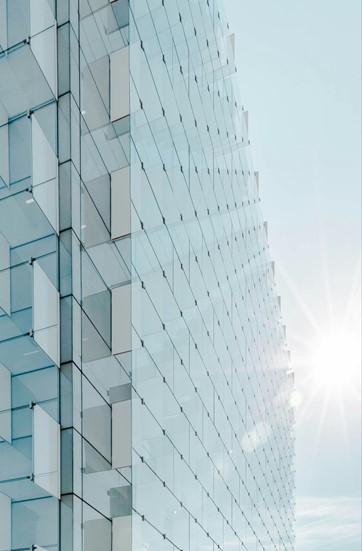
What benefits do Post-Modern architectural features offer to commercial property?

Photo by Joel Filipe on Unsplash
Post-modern architecture is a style that emerged in the mid-to-late 20th century as a reaction against the austerity, formality, and lack of variety in modern architecture. Characteristics of the style include use of historical references, an eclectic mix of styles, and playful elements. Post-modern buildings often feature unconventional shapes, bold colours, and a mix of materials and textures, celebrating complexity and contradiction.
What benefits do Post-Modern architectural features offer to commercial properties?
Visual Appeal and Identity: Post-modern architecture stands out due to its bold, eclectic designs, helping buildings to become landmarks. This visual distinctiveness can attract businesses and customers, enhancing the commercial value of the property.
Flexibility and Innovation: The post-modern style embraces a wide range of materials, shapes, and historical references, allowing for greater flexibility in design. This can lead to innovative solutions that meet the unique needs of modern commercial spaces.
Cultural and Historical Context: By incorporating elements from different architectural styles and periods, post-modern buildings often resonate more deeply with their surroundings. The movement attempts to create designs with regard to their urban context to create a sense of place and community identity, making the buildings more relevant and appreciated.
Playfulness and Engagement: Post-modern design often includes playful and unexpected elements that engage the public and encourage interaction. This can enhance the user experience and make commercial spaces more inviting and enjoyable.
Diverse Aesthetics: The eclectic nature of post-modern architecture allows for a mix of aesthetics that can appeal to a broad audience. This diversity can attract a variety of tenants and visitors, enhancing the commercial viability of the property.
Functional Design: Despite their often-whimsical appearance, post-modern buildings can still be highly functional. The flexibility in design can accommodate a variety of commercial uses, from office spaces to retail environments, optimising the building’s utility.
Post-modern architecture is not without criticism. Some consider the buildings often appear disjointed or out of place in their surroundings. The emphasis on style and decorative elements over structural integrity and functionality can lead to superficial designs that may age poorly. Additionally, the eclectic borrowing from various historical styles sometimes results in misinterpretations or superficial pastiche, raising concerns about originality and authenticity.
Despite these criticisms, post-modern architecture has had a significant impact on the field, encouraging architects to explore new forms, materials, and ideas, and contributing to a more diverse and dynamic built environment.
Overall, the benefits of post-modern architectural features in commercial properties lie in their ability to combine aesthetic appeal with functional, culturally relevant, and engaging spaces that meet modern commercial needs.
Explore some examples of postmodern design below. What do you think? Do you feel that it benefits commercial property? Whatever your taste in design we think we have you covered with our 1,000’s of listings on novaloca.com
The Glasshouse International Centre for Music (originally known as The Sage Gateshead) is a music venue and centre for the arts designed by Norman Foster. It has a sweeping, curved roof, which resembles a wave that contrasts with the more angular, industrial architecture of the surrounding area, making it stand out prominently on the banks of the River Tyne and enhances its significance as a regional landmark.
The Deep, Hull. Architect Sir Terry Farrell designed this aquarium by drawing on Hull’s maritime heritage. The building’s angular shape is ship-like and references both the city’s shipbuilding history and the aquatic theme of the facility. The Deep is a prime example of how post-modern architecture can create a building that is deeply rooted in its local context while also being innovative and visually striking.
